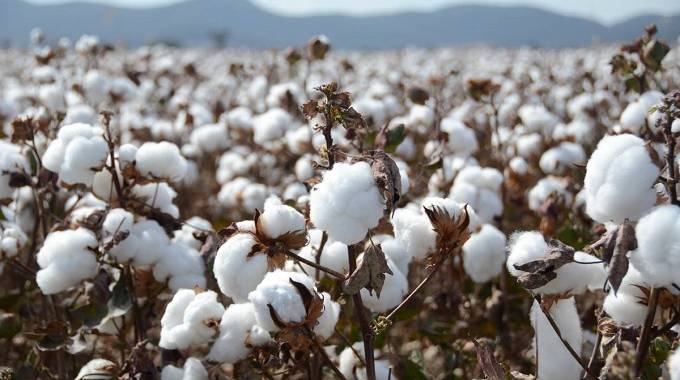
Martin Kadzere
Senior Business Reporter
Zimbabwe intends to increase its cotton output in the next few years after the Cotton Company of Zimbabwe (Cottco) engaged large-scale farmers mainly with irrigation infrastructure last year to grow the lucrative crop.
Over the past two decades, cotton has been largely grown by small-scale farmers, who account for over 95 percent of output. Cottco, the country’s largest financier of the “white gold”, last season introduced commercial farming to boost production.
“This year, we did 6 000 hectares with 300 farmers and we are targeting to contract 2 000 farmers in the next three years,” Cottco acting managing director Mr Pious Manamike told The Sunday Mail Business. “We are simply tracing the footsteps of our farmers who previously had experience in cotton farming,” he added.
Cottco is targeting 50 000 tonnes of cotton from the large-scale farmers. The project was launched in Mashonaland West Province and will soon be cascaded to other provinces.
Mr Manamike, however, emphasised that the programme would not destabilise the production of other crops.“We are not competing with other crops but targeting idle land so that we don’t destabilise other crops,” he said.
“As we progress, we also intend to engage new farmers who have not been in cotton production.”
Cotton and tobacco are major sources of livelihood and the country’s largest foreign currency earners.
Production peaked at 353 000 tonnes in 2012, but progressively declined due to inadequate inputs and agronomic support, which led to low yields and rampant side-marketing, which culminated in poor debt recovery by some cotton merchants.
Poor debt recoveries resulted in contractors perceiving higher levels of risk and consequently cutting back on the value of inputs financing. This further compounded the problem of low yields and resulted in a massive reduction in crop production.
In 2015, cotton production hit the lowest production levels in nearly two decades to 28 000 tonnes, prompting the Government to intervene with Presidential Free Inputs Scheme to boost its production.
From about 28 000 tonnes, production steadily rose to 142 000 tonnes in 2018 but fell to about 70 000 tonnes last year due to a drought, which also affected other crops.
Prospects for this season are looking brighter thanks to the good rains that have been received over the past few weeks.
Mr Manamike said Cottco will continue running the inputs support programme for small-scale farmers. Cottco supports nearly 400 000 households under its Free Inputs Scheme programme.
Last year, Mr Manamike also said the company had already completed field trials for its new hybrid seed to boost production. He said the hybrid seed can yield a minimum of 80 bolls per plant, from an average 24 bolls.
Cottco has completed field trials for the hybrid seed from India in collaboration with Quton Seed Company. It is expected if all farmers adopt this seed, the country could earn over US$2 billion in foreign currency.
The company said it was working on a phased three-year programme to get the bulk of the cotton farmers to grow the hybrid seed. This will also require considerable investment in new ginneries at community level.
